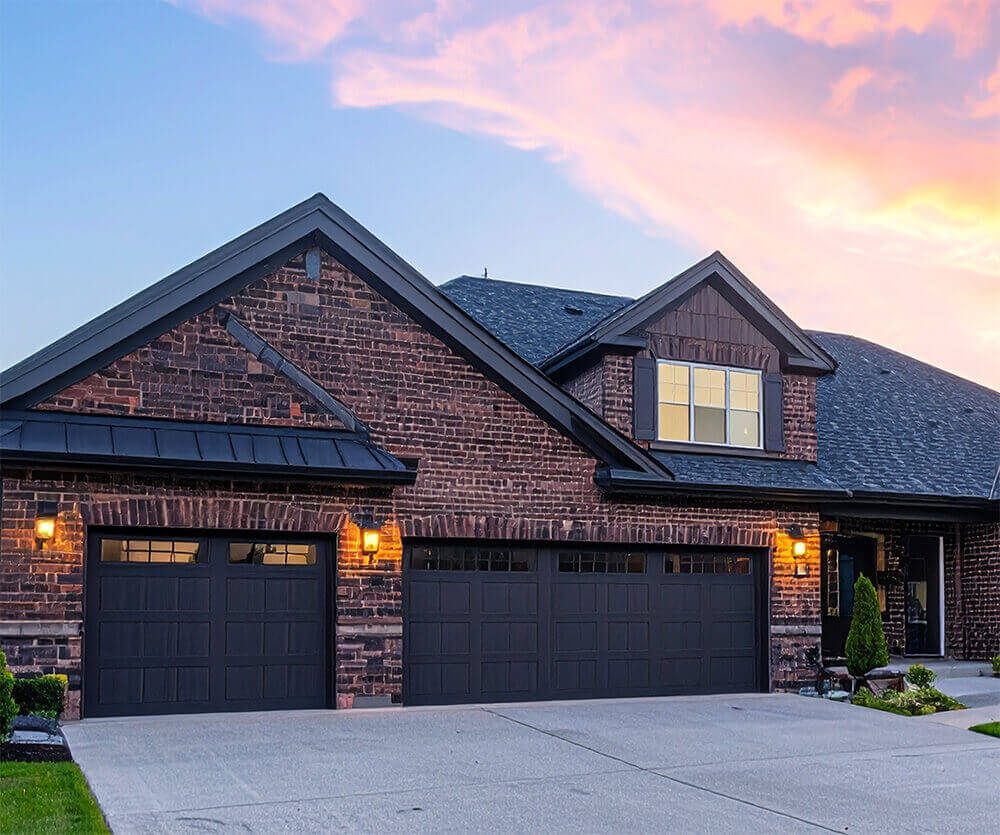Mortgage definition and basics
At its core, a mortgage is not just a home loan; it’s your ticket to owning a piece of the American dream. It involves borrowing a specific amount of money to buy a home, and in return, you promise to pay it back over time. The key terms – principal, interest, and down payment – play a crucial role in understanding how this financial agreement works.
- Principal: The amount of money you borrow determines the size of your mortgage. Borrowers repay this amount over the life of the loan.
- Interest: This is the cost of borrowing money. Fixed or adjustable interest rates influence the total amount you repay.
- Down Payment: The initial upfront payment you make toward the home’s purchase. This is a percentage of the home’s purchase price.
How does a mortgage work?
When you decide to buy a property, you typically don’t pay the entire purchase price upfront. Instead, you secure a mortgage from a lender, allowing you to borrow a significant portion of the home’s cost.
Borrowers then repay the borrowed amount, known as the principal, over an agreed-upon period, usually spanning several decades. The lender charges interest on the borrowed sum, which is the cost of borrowing money.
This interest, along with the principal, makes up your monthly mortgage payment. As you make these payments, you gradually build home equity in your home – meaning you own a larger share of the property outright.
Understanding your monthly mortgage payment
Several components, each serving a specific purpose, typically compose your mortgage payment. Let’s break down the key elements that make up your monthly mortgage payment:
-
The principal is the amount of money you borrowed to purchase your home. Each month, a portion of your mortgage payment goes toward repaying this loan amount.
-
Interest is the cost of borrowing money. The lender charges this fee for the privilege of using their funds. They express the interest rate as a percentage, and a portion of your monthly mortgage payment goes toward paying off this interest.
-
Local governments impose property taxes based on the assessed value of your property. Your lender may collect a portion of your annual property taxes each month and hold it in an escrow account. When the taxes are due, the lender pays them on your behalf.
-
Homeowners insurance protects your home and personal property from various risks, such as fire, theft, or natural disasters. Similar to property taxes, lenders often ask for a part of your yearly homeowners insurance in each monthly payment. The lender holds this amount in an escrow account and pays it when the insurance premium is due.
-
A down payment of less than 20% of the home’s purchase price may necessitate payment of private mortgage insurance (PMI). This insurance protects the lender in case you default on the loan. Your monthly mortgage payment includes the cost of PMI until you’ve reached a certain level of equity in your home.
-
If your property is in a homeowners association (HOA), you might pay monthly fees for services and amenities. These fees could cover things like landscaping, maintenance of common areas, or community facilities.
Interest rate structures
A mortgage isn’t just a one-size-fits-all deal; it comes in different shapes and sizes, known as loan terms. The most common types are fixed-rate and adjustable-rate mortgages.
-
Fixed-rate mortgage
With a fixed-rate loan, your interest rate stays the same throughout the life of the loan. It offers predictability, making it easier for you to budget. You know exactly what you’ll pay every month, making it an excellent choice for first-time homebuyers.
-
Adjustable-rate mortgage
Adjustable-rate mortgages have interest rates that can change over time, typically after an initial fixed period. While your initial interest rate may be lower than that of a fixed-rate mortgage, it can go up or down over time.
-
Life of the loan
The life of the loan is the duration over which you’ll be making payments. Lenders will typically set these at 15, 20, or 30 years. The longer the loan term, the smaller your monthly payments, but you’ll end up paying more in interest over the life of the loan.
Types of mortgage loans
Now that you grasp what a mortgage is, let’s look at the different types for various needs and financial situations.
-
Private lenders, not government entities, underwrite and insure conventional mortgages, commonly seen as a staple in homebuying. These loans, following Fannie Mae and Freddie Mac guidelines, suit individuals with a stable financial background. Potential borrowers should expect higher credit score requirements compared to some other mortgage options.
Pros:
- Flexibility in terms and conditions.
- Low down payment options for first-time homebuyers.
- No upfront mortgage insurance premiums.
Cons:
- Stricter credit score requirements.
- Higher down payment compared to some government-backed loans.
-
Enter FHA loans for those with less-than-perfect credit scores and small down payment capabilities. The Federal Housing Administration backs these loans, making homeownership more accessible. However, keep in mind that FHA loans often come with mortgage insurance costs.
Pros:
- More lenient credit score requirements.
- Low down payment options.
Cons:
- Upfront and ongoing mortgage insurance premiums.
- Property must meet certain standards.
-
For our honored veterans, VA loans stand out as a special option. These loans have benefits like no down payment, making homeownership more achievable for those who served our country. Eligibility criteria apply, so it’s essential to understand the features and considerations.
Pros:
- No down payment requirement.
- Competitive interest rates.
- No private mortgage insurance (PMI) is required.
Cons:
- Verification of military service is required.
- The property must meet VA standards.
-
USDA loans focus on homebuyers in rural and suburban areas. The U.S. Department of Agriculture supports these loans, allowing eligible buyers to purchase homes in certain regions. A significant advantage is the potential for zero down payment, making homeownership more accessible in qualifying areas.
Pros:
- No down payment.
- Favorable terms for eligible borrowers.
Cons:
- Limited to specific geographic areas.
- Income and property eligibility criteria.
-
Lenders design jumbo loans for borrowers requiring larger loan amounts than conventional loan limits typically allow. These loans often come with stricter requirements and higher interest rates.
Pros:
- High-Value Property Acquisition.
- Flexible Terms.
Cons:
- Stringent Eligibility Requirements.
- May come with higher interest rates.
The mortgage process
Understanding the process of obtaining a mortgage is essential. Here’s a simple roadmap to guide you through:
-
Before you start house hunting, it’s a good idea to get pre-qualified for a mortgage. This involves sharing your financial information with a lender, who will assess your ability to borrow a certain amount. Prequalification gives you a clear idea of your budget.
-
Now comes the fun part: finding your dream home! With your pre-qualification in hand, you can confidently search for homes that fit your budget. When you find the right one, you’ll make an offer to the seller.
-
Once your offer is accepted, it’s time to submit your formal mortgage application. You’ll provide detailed financial information, and the lender will review your credit score, income, and other factors to decide whether to approve your loan.
-
The lender’s underwriting team will scrutinize your application. This involves verifying your financial information, appraising the property, and ensuring the home’s title is clear of any issues. If all checks out, you’ll receive a loan commitment.
-
Closing is the final step, where you’ll sign the loan documents, pay any closing costs, and officially become a homeowner. You’ll receive the keys to your new home and can move in.
How to compare mortgages
With various mortgage options available, it’s important to know how to compare them effectively. Here’s how you can make an informed decision:
-
Interest rate
The interest rate is a critical factor in your mortgage. Compare rates from different lenders and understand whether you’re getting a fixed or adjustable rate. A lower interest rate can save you money over the life of your loan.
-
Loan term
Consider the length of the loan term. Shorter terms often have higher monthly payments but lower overall interest costs. Longer terms may offer lower monthly payments but more interest paid over time.
-
Down payment
Look at the down payment requirements for each mortgage type. Conventional loans require 3% for first-time homebuyers and 5% for return buyers. FHA loans can be as low as 3.5%. Your down payment affects your monthly payments and the overall cost of your loan.
-
Closing costs
Compare the closing costs associated with each mortgage offer. These costs can vary between lenders, and it’s essential to understand the fees involved.
-
Monthly payments
Calculate and compare your monthly mortgage payments for each offer. Ensure they align with your budget and financial goals.
-
Prepayment penalties
Check if there are prepayment penalties. Some mortgages charge fees if you pay off the loan early. If you plan to do so, it’s best to avoid loans with prepayment penalties.
-
Flexibility
Consider how flexible the mortgage terms are. Are you allowed to make extra payments without penalties? Can you refinance if rates drop? These factors can be crucial in the long run.
Repayment strategies
Having a home is a big financial responsibility, so it’s important to handle mortgage payments wisely for stability. Below are effective repayment strategies to ensure your journey in homeownership is as smooth as possible.
-
Understanding your mortgage statement is crucial for managing your finances effectively.
- Breakdown of Payments: Familiarize yourself with how much goes to the principal, interest, taxes, insurance, and any additional fees.
- Track Escrow Account: Your lender may manage your property taxes and homeowners insurance through an escrow account. Regularly review this section of your statement to ensure you are setting aside the correct amounts.
-
Flexibility is crucial when it comes to managing your mortgage. Explore different payment options to find the strategy that aligns with your financial goals.
- Biweekly Payments: Consider making half of your monthly mortgage payment every two weeks instead of the full amount once a month. This leads to 26 half-payments, which is the same as making 13 full payments each year. It can lower the total interest paid on the loan.
- Additional Principal Payments: Whenever possible, make additional payments toward the principal amount. Even a small extra amount can significantly reduce the total interest paid and shorten the life of the loan.
- Round-Up Payments: Round up your monthly payment to the nearest hundred or even add a fixed amount to each payment. This simple strategy can accelerate your equity build-up over time.
-
Maintaining a comprehensive budget is the cornerstone of successful homeownership. Here are some tips to keep your finances on track:
- Emergency Fund: Establish and maintain an emergency fund to cover unexpected expenses. This can prevent financial strain if unforeseen home repairs or other emergencies arise.
- Prioritize Debt Repayment: If you have other debts, prioritize paying them down to free up more funds for your mortgage. Tackling high-interest debt first can save you money in the long run.
- Review Budget Regularly: Regularly review your budget to ensure it aligns with your financial goals. Adjust as needed to accommodate changes in income, expenses, or financial priorities.
-
Open and proactive communication with your mortgage lender can be instrumental in navigating financial challenges.
- Discussing Hardships: If you encounter financial difficulties, reach out to your lender as early as possible. Many lenders have assistance programs or can offer temporary solutions.
- Refinancing Consideration: Consider whether refinancing makes sense based on interest rate changes or credit score improvements. Refinancing can potentially lower your monthly payments or shorten the loan term.





